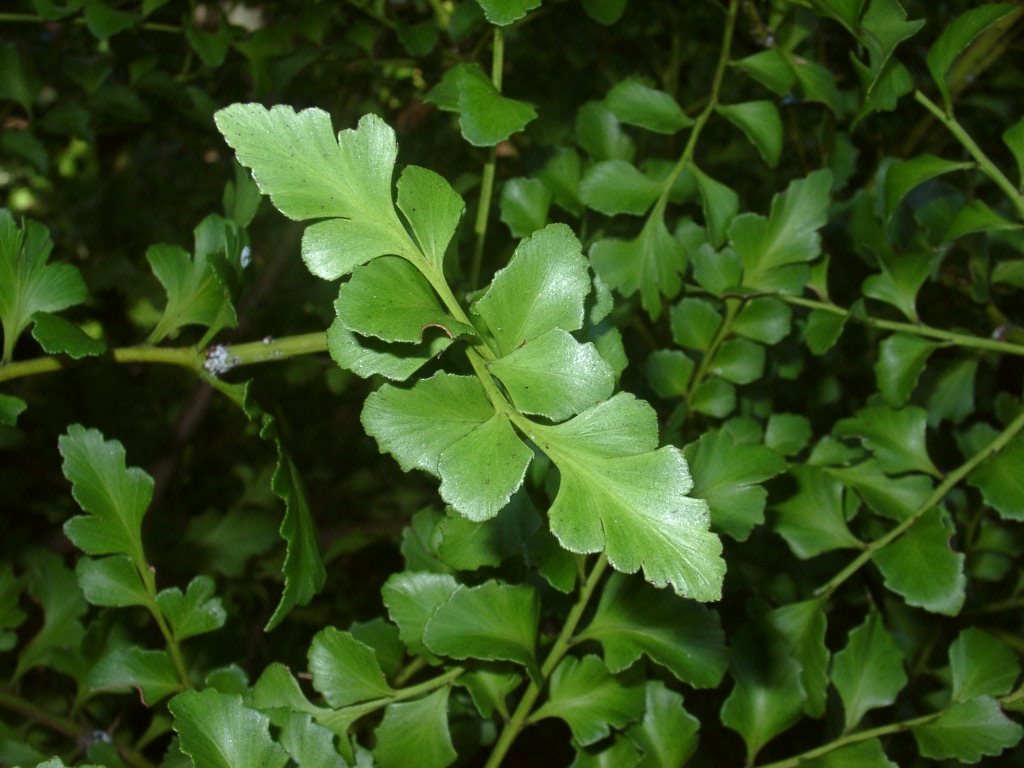Phyllocladus trichomanoides
Credits
Article from Bean's Trees and Shrubs Hardy in the British Isles
Recommended citation
'Phyllocladus trichomanoides' from the website Trees and Shrubs Online (treesandshrubsonline.
Genus
An evergreen tree of graceful habit from 50 to 70 ft high in the wild, with a trunk 3 to 9 ft in girth; devoid of down; branchlets in whorls. ‘Leaves’ (phylloclades) arranged in opposite rows on short branchlets only 2 to 4 in. long so as to resemble a pinnate leaf or certain fern fronds. Each ‘leaf’ is 1⁄4 to 1 in. long, not so much wide, obovate to diamond-shaped, the lower half entire, the upper half cut into several shallow lobes, dark dull green. Flowers of both sexes on the same plant, the males in cylindrical clusters 1⁄3 to 1⁄2 in. long at the tips of the branchlets, the females at the margins of small modified phylloclades and usually solitary. Nut (seed) solitary and seated in a cup-shaped receptacle.
Native of New Zealand on the North and South Islands ascending from sea-level to 2,500 ft. The wood is white, close-grained, and is much valued in New Zealand for building purposes. The Maoris obtain a red dye from the bark. It is hardy in Cornwall, the south of Ireland, and in similar places. It is easily recognised from the other species except P. glaucus by the whorled arrangement of the branches combined with a pinnate arrangement of the phylloclades; from P. glaucus it is well distinguished by the much smaller average size of the phylloclades which have a reddish-brown tinge when quite young.
There is an example of P. trichomanoides at Mount Usher, Co. Wicklow, Eire, measuring 22 × 11⁄4 ft (1966), and another at Fota, Co. Cork, of the same height but slightly smaller in girth, planted in 1941. In England there are smaller examples at Leonardslee and Wakehurst Place, Sussex.
From the Supplement (Vol. V)
The specimen at Mount Usher, Co. Wicklow, Eire, measures 30 × 11⁄2 ft (1975).

